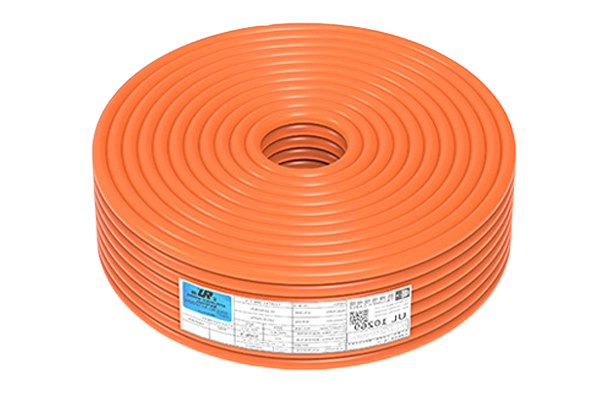What is energy storage ?
Energy storage designates all technologies to keep the energy produced for delayed use. Today it plays a strategic role in the energy transition and in the optimization of electrical networks.
In a context where renewable energy sources (solar, wind) are increasingly integrated into the network, but intermittently produce, Storage becomes essential to balance the supply and demand. For industrial companies, It also represents an efficient energy management lever.
The main functions of energy storage are as follows :
- Reduction of energy costs by storing electricity during off -peak hours to use it during consumption peaks ;
- Improved network stability by regulating voltage and frequency variations ;
- Support for the integration of renewable energies, by ensuring a constant supply even in the absence of sun or wind ;
- Increased energy autonomy, especially in isolated areas or little connected to the network.
Energy storage is not only a technical solution : It is a strategic asset to secure supply, optimize consumption and make projects more resilient.

The fundamental principles of energy storage
An energy storage system is designed to capture, Keep and restore energy on demand. Its operation is based on energy conversion : electricity is transformed into another form of energy (chemical, mechanical, thermal, etc.) During the load phase, then converted into electricity during the discharge.
2.1 Composition of a storage system
A full energy storage system generally includes :
- An energy conversion device (inverter, AC/DC converter) ;
- A storage support (battery, steering wheel, Thermal tank ...) ;
- An energy management system (EMS – Energy Management System) responsible for monitoring, Check and optimize energy flows ;
- Adapted electricity cables ensuring secure energy transmission between the different components.
2.2 The load and discharge process
- Charge : When production exceeds demand (For example in broad daylight for a solar power plant), Energy is captured and stored. It is converted according to the technology used : chemical energy in a lithium-ion battery, potential energy in a pumping station, etc.
- Dump : When demand exceeds production or in the event of a network cut, The system restores the energy stored by converting it into usable electricity.
2.3 Energy efficiency and lifespan
Each storage technology has a different energy efficiency, that is to say the percentage of recoverable energy compared to that stored. For example, Lithium-ion batteries have a high efficiency (85 has 95 %), while the thermal systems are more variable.
The life of the system depends on the number of load/discharge cycles, Operating conditions, of the battery type or support used, as well as the quality of the components. Power cables, notably, must resist heat, overvoltages and demanding environments.
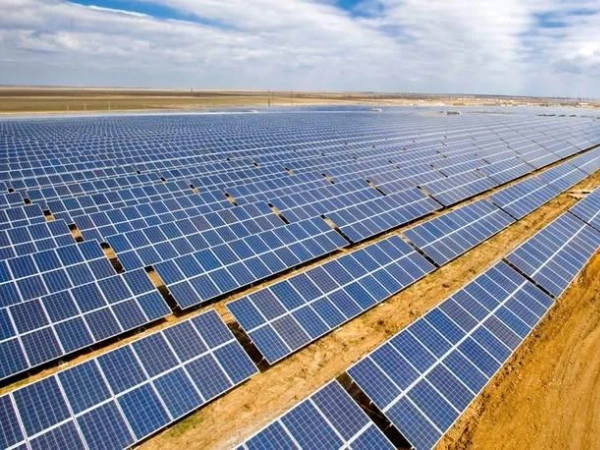
The main energy storage technologies
Today there are several energy storage technologies, each based on different principles. Their choice depends on the needs of the project : necessary power, storage, frequency of use, environmental constraints, etc.
3.1 Electrochemical storage (batteries lithium-ion, sodium-ion)
Electrochemical storage is based on the use of batteries to store electricity in the form of chemical energy.
During the load phase, electrical energy is converted into chemical energy via electrochemical reactions. During the discharge, This process is reversed : chemical energy is again transformed into usable electricity.
Among these technologies, Lithium-ion batteries today dominate the market. They offer high energy density, a quick response and a conversion yield generally between 85 % et 95 %.
Les batteries sodium-ion, evolving, appear as a promising alternative, especially in terms of cost and availability of materials.
Current applications
Electrochemical batteries are widely used in various fields :
- Residential and industrial solar storage (Photovoltaic storage);
- Electrical mobility, Especially for cars, Buses and utility vehicles;
- Stationary storage systems, such as micro-rings or out-of-network facilities;
- Data centers and emergency power systems (UPS) inverters。
They are also used in Bess systems (Battery Energy Storage Systems) to balance production and consumption on electrical networks.
Benefits
- High energy efficiency;
- Quick response time,Suitable for critical applications;
- Modularity,Easy to adapt to different storage capacities;
- Compact size and high energy density。
Disadvantages
- Progressive degradation with load/discharge cycles;
- Temperature sensitivity,requiring a thermal management system;
- Risk of fire or explosion in the event of failure;
Still high cost for large capacity solutions.
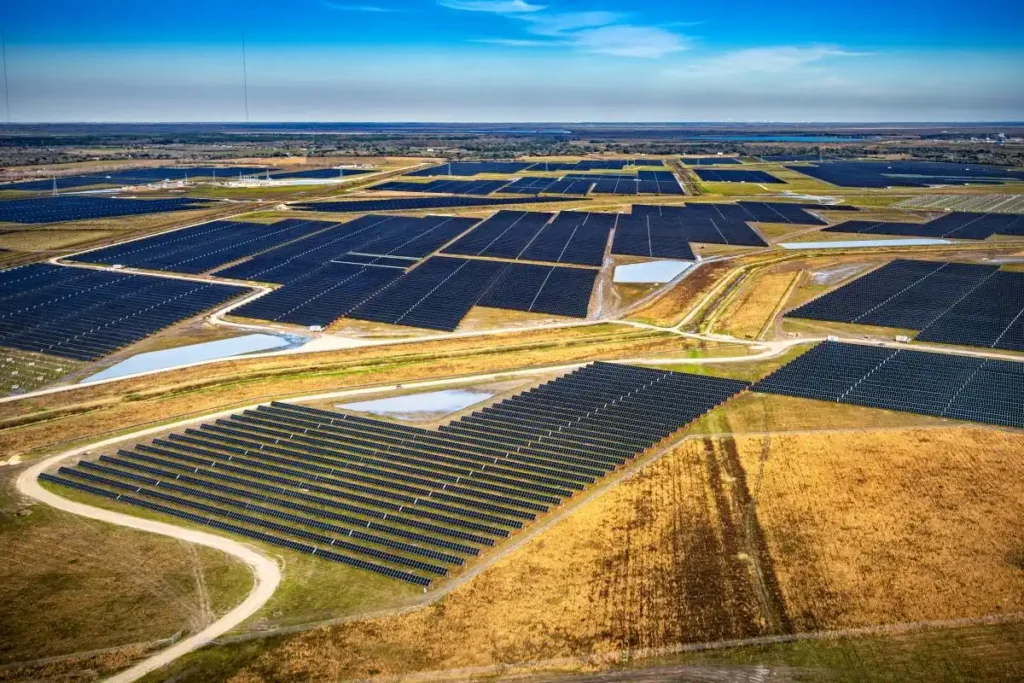
3.2 Mechanical storage (hydraulic pumping, steering wheel)
Mechanical storage uses the movement or position of an object to store energy. This category mainly includes hydraulic pumping and the steering wheel of inertia.
Operating mechanism
Hydraulic pumping storage (Step - energy transfer station by pumping) is today the most wide -used energy storage technology.
When there is an excess of electricity, This is used to pump water from a lower basin to a upper basin. In times of high demand, The water is released to run turbines, thus producing electricity.
The steering wheel of inertia, as for him, Stocke energy in the form of rotary movement. Electricity is used to run a high speed rotor in a vacuum environment. When a request for energy occurs, The rotor slows down and kinetic energy is converted to electricity.
Storage capacity and response time
- STEPs have a very high storage capacity. They are able to restore energy for several hours, even several days. On the other hand, their response time is moderate, a few minutes.
- Inertia ruffles have a more limited capacity. However, their response time is almost instantaneous, which makes them particularly useful for frequency regulation or micro-cuts.
Constraints and limitations
- Hydraulic pumping requires a specific topography : Two different altitudes tanks, a large space and a heavy infrastructure. It is therefore not very suitable for urban or dishes environments.
- The ruffles of inertia have great efficiency on short durations. But they are not suitable for prolonged storage needs. What's more, their initial cost can be high for certain applications.
In summary, Mechanical storage remains a robust and proven solution, But which must be chosen according to the physical constraints of the site and the needs in storage duration.

3.3 Thermal storage (melted salts, heat tanks)
Thermal storage consists in storing energy in the form of heat or cold. Thermal energy is then recovered to produce electricity or supply heating systems.
This technology is based on the capacity of materials to store and restore heat, often at high temperature.
Conversion and recovery process
During the load phase, energy (often electric or solar) is used to heat a fluid or a material. Madery salts are widely used in high temperature systems. They can store heat at more than 500 ° C, while maintaining good thermal stability.
When energy demand occurs, The accumulated heat is transferred to a heat transfer fluid or to steam. This can then be used to produce electricity, via a turbine, or to power a heating system.
The recovery process depends on the thermal insulation level and the type of technology used.
Areas of application
Thermal storage is particularly suitable for sectors where heat represents a significant part of energy consumption. We find it in particular in :
- Thermodynamic solar power plants (CSP) Equipped with melted salt tanks;
- Industrial installations requiring large quantities of heat for their processes;
- Urban heat networks, which use isolated tanks to store the heat produced in off -peak hours.
This type of storage makes it possible to decorate the production and consumption of heat, thus improving overall energy efficiency.
3.4 Chemical storage (hydrogen)
Chemical storage via hydrogen represents a promising solution for long -term energy storage. It is based on the conversion of electricity to hydrogen, then on his retraining in electricity at the right time.
Water electrolysis and fuel cell
The process begins with water electrolysis. Thanks to an electric current, Water is broken down into hydrogen (H₂) and oxygen (O₂). Hydrogen product is then stored in gaseous or liquid form, in high pressure or cryogenic tanks.
When you need energy, Hydrogen is introduced into a fuel cell. He reacts with oxygen to produce electricity, heat and water. This process is silent, own, and does not make any greenhouse gases if hydrogen comes from a renewable source.
Technological perspectives and challenges
Green hydrogen, Product from renewable electricity, is considered a key lever for the decarbonation of industry and heavy transport. It can store excess electricity over long periods - several days, even months - which is difficult with other technologies.
However, Several challenges still slow down its large -scale adoption :
- Limited overall yield : each conversion (electrolysis, compression, retraining) causes significant energy losses;
- High cost of electrolysis, storage infrastructure and fuel cells;
- Safety problems linked to the handling of flammable high pressure gas;
- Lack of standards and distribution infrastructure worldwide。
Despite these constraints, Hydrogen is at the heart of the energy strategies of many countries. It represents a technology of the future, capable of playing a central role in the energy transition, in particular by coupling the electricity sectors, industry and mobility.

3.5 Other emerging technologies
In addition to conventional solutions, several emerging storage technologies are being studied. Although there is little widespread, They offer specific advantages in certain use cases.
Superconductor magnetic storage (SMES)
Magnetic storage by superconductivity (SMES) allows you to store energy in the form of a magnetic field in a superconductive coil.
This system offers an ultra-fast response and a very high yield (next to 100 %). It is particularly suitable for applications requiring extreme tension stability, like calculation centers or critical networks.
However, Smes require constant cryogenic cooling, which considerably increases their cost and limits their large -scale deployment.
Compressed air storage (CAES)
Energy storage per compressed air (Compressed Air Energy Storage) consists in compressing air in underground cavities during periods of energy surplus.
When a request manifests itself, The air is released, heated and sent to a turbine to produce electricity.
This system allows the storage of large amounts of energy on long periods, Similar to STEP. However, it depends on local geology, and its overall yield remains lower than that of the batteries (environ 40 has 60 %).
Other tracks explored
Among the other promising ways :
- Supercapacitors : Very high power density, Recharge/discharge in a few seconds, But low storage capacity;
- Gravitational storage : Massive blocks raised and then released to generate electricity via cables and pulleys;
- Redox flow batteries : Suitable for large capacity stationary applications, with a high lifespan.
Ces technologies, Although still in development, illustrate the richness and diversity of the storage sector. They could supplement or replace current solutions in specific contexts, according to the technical and economic developments to come.

The role of cables in energy storage systems
In an energy storage system, Electric cables are much more than simple connections. They ensure the secure and effective transfer of energy between the different components : batteries, inverters, transformers, Control units and external networks.
4.1 Critical function in system architecture
The cables ensure :
- The power transfer to high or low voltage depending on the residential system scale, industrial, network);
- The continuity of the signal and communication in control and management systems;
- Installation safety, especially in the event of thermal overload or binding environment.
In large capacity systems (Bess, micro-network, Solar power plants coupled with storage), Bad wiring selection can cause :
- Significant energy losses;
- Overheating, even electric fires;
- Premature degradation of components, reducing the life of the system.
4.2 Technical specificities required
Storage systems impose specific cable requirements :
- High temperature resistance (Often up to 90–125 ° C or even more in closed environment;
- Compatibility with rapid load/discharge currents (pulsed or continuous);
- Reinforced insulation against overvoltages or electromagnetic interference;
- Flexibility and mechanical resistance in mobile or modular installations。
According to the interior application, container, underground, On the roof), It may be necessary to use cables :
- Halogen-free certified (LSZH) To avoid toxic emissions;
- Compliant with IEC standards, UL or EN50618 depending on the export markets;
- With reinforced ducts against humidity, oil, UVs or rodents。
4.3 Link between energy performance and cable quality
The overall performance of a storage system depends in part on the quality of the cables used. An excessive voltage drop or a poorly controlled temperature elevation can affect the system yield.
What's more, Poor quality cables cause increased maintenance costs, service interruptions and a degraded image of the project.
For integrators, EPC, Engineers and distributors, The choice of the cable supplier therefore becomes strategic. It is a question of guaranteeing both :
- Compliance with international standards;
- Long -term reliability;
Personalized options according to voltage requirements, intensity, connection or environment.
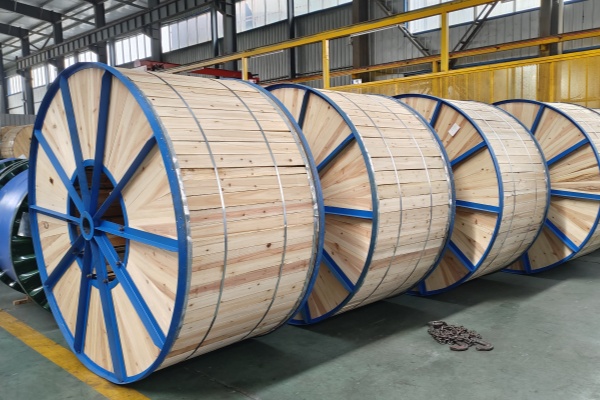
The future of energy storage and its industrial impact
Energy storage is about to become a central pillar of the global energy transition. Its rapid development in depth modifies the organization of electrical networks, industrial strategies and medium -term investment priorities.
5.1 Towards a more flexible and resilient energy system
Thanks to storage, Energy producers can stabilize networks, Integrate more variable renewable sources (solar, wind) and smooth the request on 24 hours.
Locally, Companies can become producers (prospective), partially or completely autonomous.
This flexibility is also crucial in the face of climatic vagaries, consumption peaks and network interruptions.
5.2 A lever for competitiveness for industry
In industrial sectors with high consumption (steel, chemistry, fabrication), storage allows :
- Reduce energy costs by buying at the right time (erase, arbitrage);
- Secure production against cuts;
- Reduce the carbon footprint to meet ESG requirements and ISO standards.
Companies that integrate these technologies early on position as leaders in the energy transition, capable of capturing green funding, grants or regulatory advantages.
5.3 A changing supply chain
The rise in storage creates an exponential demand for reliable components : batteries, converters, management systems, And of course ... industrial quality cables.
Integrators and manufacturers are looking for suppliers capable of guaranteeing performance, Compliance and logistics flexibility.
This opens major commercial opportunities for B2B companies, especially in export, Intelligent infrastructure, or large -scale projects (Solar parks, data centers, Logistics hubs, etc.).
5.4 Convergence with digital and AI
Storage also evolves towards connected systems, Software piloted, integrating :
- Intelligent energy management (EMS);
- Prediction via AI to optimize the load/discharge;
- Energy cybersecurity.
Future solutions will therefore be hybrid, modular, interconnected, Creating an intelligent energy ecosystem in which each component - including cables - must meet strict technical and digital requirements.
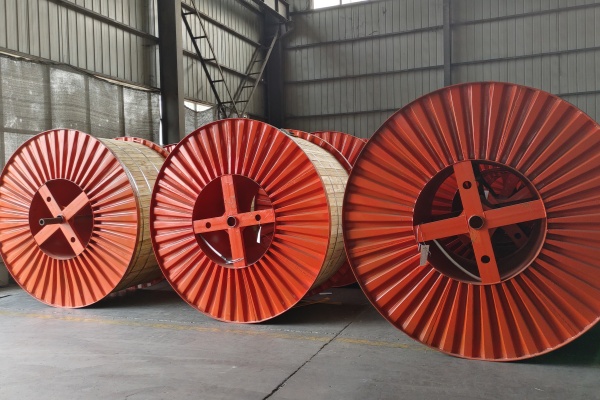
Why choose the right cables for your storage systems ?
The choice of electric cables plays a crucial role in safety, the performance and longevity of energy storage systems. An installation of batteries or inverters cannot work optimally without reliable wiring, adapted to the environment and the required power.
Key characteristics to consider
Energy storage systems cables must meet specific technical requirements :
- High temperature resistance : repeated load/discharge cycles generate heat. Cables must support temperatures often up to 90 ° C or more;
- Excellent electric insulation : To avoid power leaks and guarantee safety in a closed environment or high energy density;
- Compatibility with strong intensities : especially for connections between batteries, Electric inverters and tables;
- Personalization capacity : Each project is unique. Length, section, type of insulation or shielding must be able to be adapted to customer needs.
Recommended scenarios for use
Here are some types of essential cables in a storage system :
- Medium voltage cables (MT) : To connect inverters to networks or transformers in large installations;
- Battery connection cables (Battery cables) : very flexible, heat and pulsed tension resistant;
- Fire resistant cables (Fire-resistant cables) : recommended for containers or technical rooms where fire safety is priority;
- Photovoltaic cables EN50618/UL4703 : When a PV system is coupled with battery storage.
Why choose ZMS Cable for your storage projects ?
As a global supplier specializing in industrial wiring solutions, ZMS Cable has been supporting for more than 30 years of projects in more than 100 pays. We understand the specific requirements of modern storage systems and offer products adapted to the strictest standards.
Certified products and in accordance with international standards
Our cables comply with the main international certifications :
- IEC, IN, NF, UL, ISO9001;
- Complete traceability and test reports provided;
- Rigorous quality control at each stage of production.
Custom cables for storage systems
ZMS offers :
- Personalized solutions : section, tension, shielding, colors, packaging;
- Guaranteed compatibility with lithium batteries, inverters, EMS, and electrical cabinets;
- Cables designed to operate in difficult environments (High temperatures, humidity, UV, Mechanical constraints).
Fast delivery and recognized export experience
We have :
- Significant stocks for rapid deliveries on urgent projects;
- A specialized logistics team Export, Mastering customs standards, Incoterms and documentation;
- Solid B2B experience in infrastructure projects, renewable energy, industrial and residential storage.
ZMS Cable is a cable supplier For reliable energy storage, From design to installation.
Conclusion : Energy storage, A trend and an opportunity
Energy storage is much more than a technological subject : It is a strategic lever to reduce costs, secure energy supply and speed up the transition to a more sustainable model.
Whatever your project - Solar, industrial, hybrid or intelligent network - The choice of good components is the key to success.
At ZMS Cable, We believe that a good cable is the invisible spine of a powerful system.
Contact us today to discuss your cable needs for energy storage. Our engineers support you in the choice of the solution most suited to your technical and commercial objectives.

